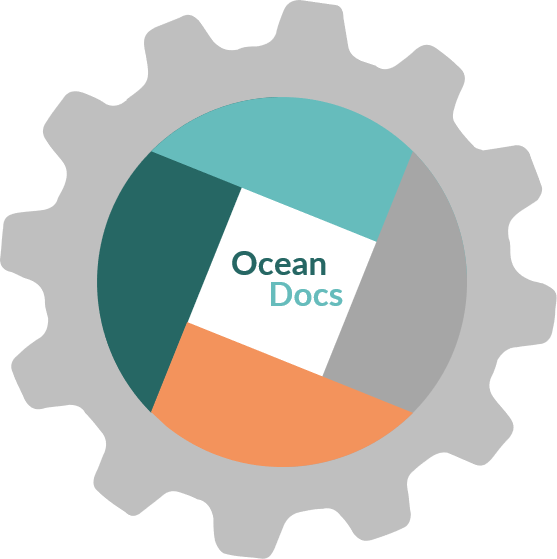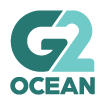OceanDocs
Manages your shipments securely and effectively from booking to delivery

About OceanDocs
OceanDocs is G2 Ocean’s digital cargo documentation platform. It gives you, the shipper or agent, end-to-end supply-chain visibility and information of the entire voyage journey in one centralised system.
OceanDocs enables you to work with your supply chain partners and manage your shipments securely and effectively from booking to the destination port.
The system allows you to view trusted live data collected from your supply chain partners. This can have a significant impact on the effectiveness and costs of your logistics management.
One Centralised System
Each party in OceanDocs has immediate access to status changes for their BOLs and cargo releases. This centralised access eliminates e-mail updates and manual spreadsheets.
Cash Flow Improvements
Once released, electronically signed BOLs are immediately available to shippers, allowing them to collect funds from their receivers in a timely manner.
Communication Efficiency
OceanDocs contains efficient workflow functionality to alert parties when action or approval is required.
Data Security
Each party in OceanDocs has limited visibility based on their ports of interest and company profile. Data entry controls exist to prevent unintentional editing or printing of BOLs.
Transparency
OceanDocs allows each party to quickly see when changes have been made, and by whom, along a shipment journey.
Expedited BOL delivery
OceanDocs has more than 600 active users worldwide

Shipper & Freight Forwarders
Agents & Port Authorities
How it works
OceanDocs manages the Bill of Lading (BOL) creation and release to the shipper workflow allowing each party to securely enter, edit and approve BOL data at all stages of the voyage journey.
Document amendments are tracked in the system, allowing all parties to quickly see when changes have been made, and by whom, along a shipment journey.
Unexpected BOL changes are handled in the system through BOL switching capabilities and Letter of Indemnity functionality.
Bill of Ladings were issued out of OceanDocs in 2019
Process
1. Shipping Instructions
2. Creation of Bill of Lading
3. Collaboration
4. Agreement
Online Availability
Global Printing Solution
Features
OceanDocs offers various features, depending on your role.
Port Authorities
- Berth Planning
- Warehouse Allocation
Shippers and Freight Forwarders
- BOL Management
- LOI Requests
- Cargo Release Visibility
Agents
- BOL Management
- Arrival Notices
- Customs Reporting
- Cargo Release Management
Terminals
- Read-only access to BOL’s and Manifest’s
EDI Integrations
G2 Ocean is always happy to explore integration projects with our business partners to allow system to system data transfers.
OceanDocs currently receives shipping instructions in various Electronic Data Interchange (EDI) formats from both shippers and agents. These are released into OceanDocs as Bills of Lading and are then edited and electronically signed for issuance.
Automated customs manifests are also initiated out of OceanDocs and sent via EDI to our customs provider.
We also provide regular booking updates to our terminals via EDI.
OceanDocs & Blockchain
G2 Ocean is trialling a solution to distribute (transfer ownership) of the Bill of Lading using Blockchain technology.
All versions of the documents are stored in the system, underpinned by blockchain to guarantee that all parties quickly can track the changes completed along a shipment journey. The entire process is digital, except in some cases where a hardcopy Bill of Lading is required for customs. See below for an example of a Bill of Lading distribution using Blockchain.
1. Uploading
G2 Ocean uploads the Bill of Lading to our Blockchain provider.
2. BOL transfer
The Bill of Lading is transferred along the chain from G2 Ocean to the Shipper.
3. Shipper receives BOL
The Shipper receives the Bill of Lading.
4. BOL Transfer
The Shipper passes the Bill of Lading onto the Receiver.
5. Receiver receives BOL
The Receiver receives the Bill of Lading.
6. BOL Transfer
The Bill of Lading is transferred from the Receiver to the Discharge Agent (this is equivalent to the receiver “surrendering” the BOL).
7. Agent receives BOL
The Discharge Agent receives the Bill of Lading and releases the cargo. The process is completed.
Ready to get started?
Contact your local sales representative in G2 Ocean today to find out how you can increase productivity, improve cash and information flow.
Alternatively, send a message to our Business Process Development department by clicking on the button to the right.
OceanDocs is managed and developed by Stage 3 Systems.
